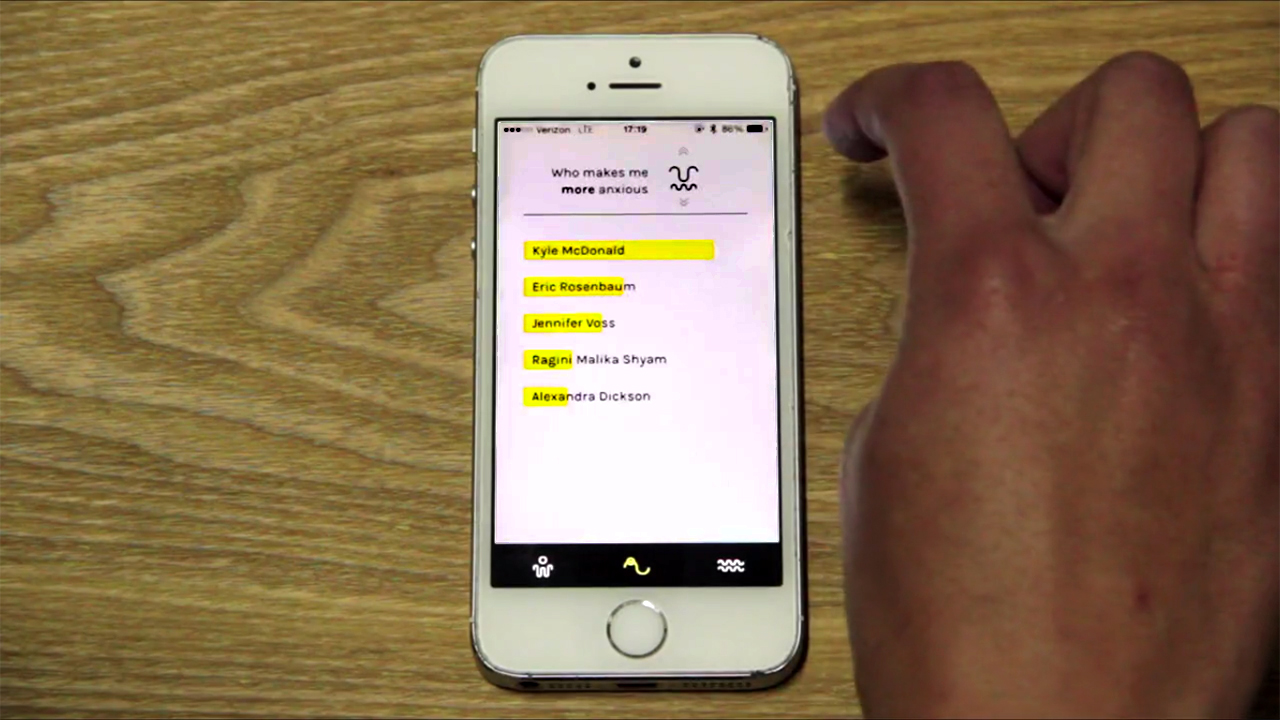The anti-Tinder has arrived and it has the hilariously dystopian, Silicon Valley-friendly name: pplkpr. More than just a dating app, pplkpr (pronounced “people keeper”), is a service that aims to monitor your real life interactions with people and eventually it blocks them on social media or schedules a date with them based on the information it gathers. A user simply wears one of those widely available wrist bands that can monitor a heart rate, and when emotional spikes occur, a request is sent to log how the user felt about an interaction. If the user connects the app to her social media accounts, it can block or unfriend people who consistently are related to negative feelings.
When one first encounters pplkpr, a project by digital artist’s Kyle McDonald and Lauren McCarthy, it’s easy to assume that it’s just a humorous stunt being done in the name of art. But the artists told ANIMAL:
pplkpr is an art project and a functional app, with real scientific and cultural research behind it. We’ve tested on iPhone 4s through iPhone 6 running iOS 8, and even the students using it for a week felt that it had a significant effect on them.

The artists began work on pplkpr while they were doing a residency at Carnegie Mellon. When they had a functional beta they tested it out for a week with a focus group of students from the university. In a joint email the creators told us about their inspiration:
We were looking at this increasing trend toward wearables and quantified life and we wondered: when does it go too far? Not taking the time to figure out your own relationships seems ludicrous. We want to think we’re more than bots. Yet we’re constantly complaining about emails in our inbox, too many social notifications, and FOMO. The idea of an algorithm tracking and managing your social life feels creepy, but what if it actually works? What if it actually improves your relationships and emotional life?
Then, what happens when the algorithm gets it wrong? Just like we can chalk up our faux pas to autocomplete or our spam filters, could an app like this provide the excuse or justification we need to say and do what we really feel?
In a helpful video on the official website, McDonald elaborates on what they discovered in their week-long test run with students:
We like things, we favorite things, retweet things and we have a pretty good feeling for how well something went online but in person we just don’t do it. But once you start doing it, we found that students wanted to do it with everything. They wanted to like and favorite and to keep track of all their interactions with everybody and everything even.
In the video, one user says, “Using the app as a justification for not wanting to hang out with someone is a lot more definitive than just saying, like, ‘I’m uncomfortable.’” Another user says that “People that made me angry is the most … the thing that stood out the most I think. Like, maybe I shouldn’t hang out with Mark, maybe he’s kind of a dick, I don’t know.”
It will take more time to find out how effective pplkpr can be as a dating app. For now, users are notified of a potential romantic match via text message if they consistently have compatible encounters with someone, but the creators envision “future versions of an app like this that could access both of your calendars and find a time and set it all up for you, so you just show up when your phone notifies you.” The dating implications will surely unravel in unexpected ways. What if you are in a relationship, but the app keeps telling you someone else is a better match? What if you’re a straight woman and the app keeps insisting other women are best suited for you?

While it’s easy to imagine this app as the first terrifying step toward Black Mirror‘s sci-fi concept of blocking people in real life, McCarthy emphasizes that it can be seen as optimistic. McDonald concurs and says when you begin to see it in that light, you start thinking, “What are things I can get out of this? What are the things that could come from this that are positive?” At it’s best, they see it as a step towards a re-birth of real life interaction. The artist’s expanded on this idea:
Talking to someone, seeing their face, it’s just so high definition. But at the same time your bandwidth is more limited, broadcast communication isn’t really an option. These more intimate relationships with fewer people, are the past and the future of social interaction. We’re just dealing with growing pains right now.
All of that actually sounds like something that could actually be a viable startup, especially as smart watches hit the market. It sounds so possible, in fact, that you forget it’s an art project. So how do the creators relate this to their artistic practice? The two said, “Together, we both have an interest in challenging social norms and assumptions about interaction, creating spaces that allow us to ask more questions.” The first question will certainly be: does anyone really want to do this? The second of many questions will be: How does this sort of digital filter on analog life effect us as human beings.
(Photo: pplkpr)


